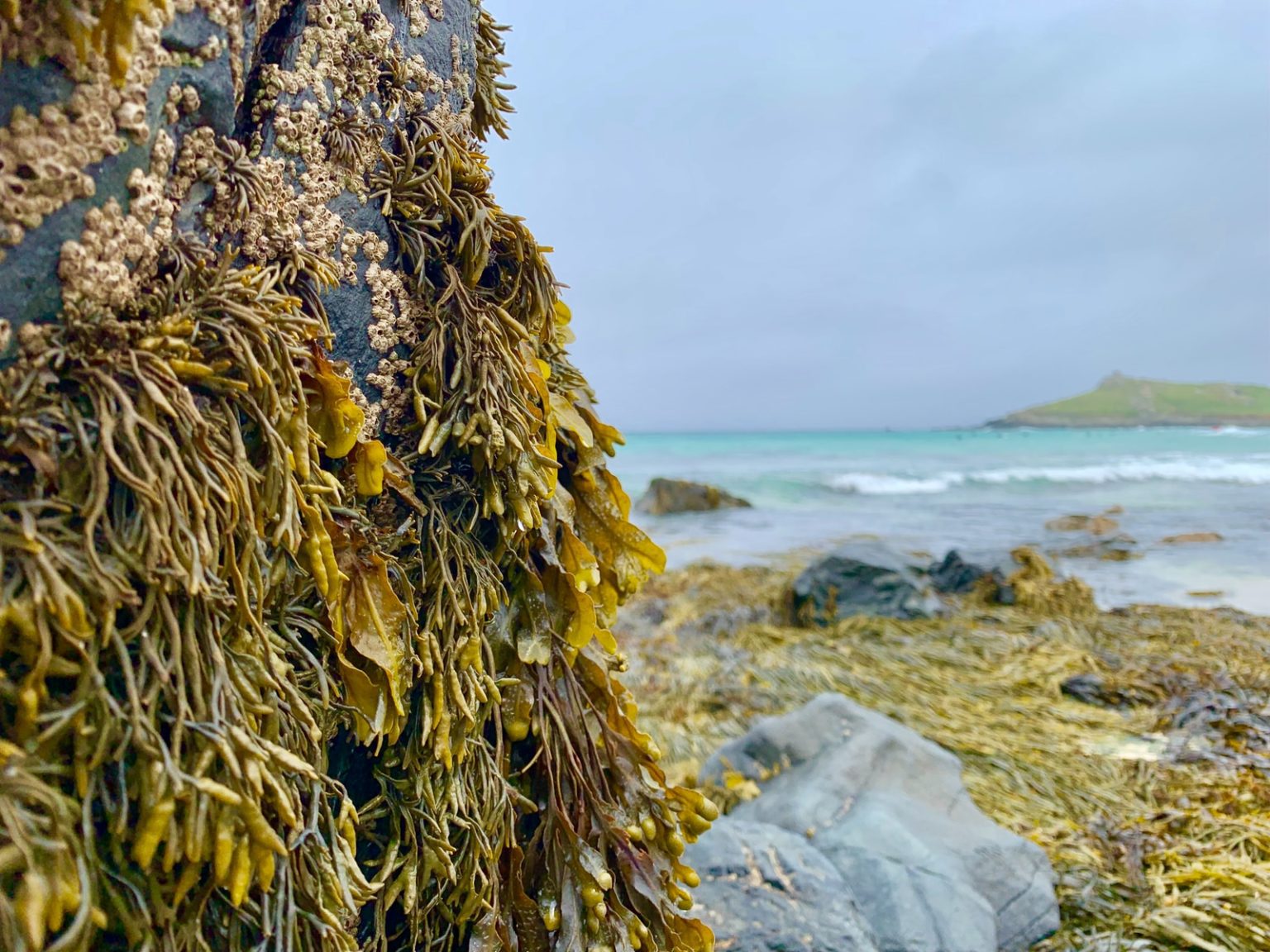The use of seaweeds dates back thousands of years. They have been used as food, medicine, cosmetics, textiles, papermaking, dyes, fertilizers, animal feed, fuel, construction materials, etc. Seaweeds can be found all over the world from tropical to polar regions.
However, one major problem associated with eating seaweed is its slimy texture. To overcome this issue, manufacturers often add preservatives to their products. Unfortunately, these additives tend to cause other issues like off-odors and discoloration.
In this article, we will discuss some common types of seaweeds that you may find in your daily life.
The first type is Laminaria which has a long history of use by humans. It was one of the first algae species known to man. Today it is still being harvested and consumed around the globe. This alga grows attached to rocks or other marine vegetation. Harvesting takes place when they break off due to storms, strong waves, or tides.
Another kind of seaweed is Fucus vesiculosus with its distinctive green color. It is also called bladderwrack because of its shape. Bladderwracks grow along rocky shores where there is plenty of sunlight. These plants produce large amounts of starch during their growth cycle. When harvesting time comes, the plant produces small bladders filled with water. After drying these bladders become very hard and brittle making them ideal for many uses such as fertilizer, insulation material, building blocks, etc.
Halophila Ovalis is another example of edible seaweed. Its scientific name means “halophyte” which refers to salt-loving organisms. Like other halophytes, H.ovalis needs high levels of sodium chloride for survival. However, unlike other halophytes, it does not need any light intensity for photosynthesis. Instead, it absorbs energy directly through its cell walls using chloroplasts located inside special cells called xanthophyll cysts. Xanthophylls give H.ovalis its characteristic bright red color. Halophilic microalgae like H.ovalis are often referred to as sea lettuce since they look similar to land vegetables. Sea lettuce is commonly eaten raw or cooked as sushi rolls.
Undaria Pinnatifida is yet another popular seaweed. Wakame is native to Japan but is now cultivated worldwide.
How is seaweed farmed?
There are two main methods of farming seaweed; open ponds and closed systems. Open pond cultivation requires large areas of land and often results in pollution due to runoff. Closed system cultivation allows smaller amounts of space but also reduces the amount of nutrients.
Closed systems usually involve growing plants inside tanks filled with filtered seawater. In order to grow the plant, the tank must be kept warm enough so that the temperature remains above 10 degrees Celsius. Plants grown under these conditions tend to produce higher yields.
What do we know about how much seaweed is produced around the world?
According to one estimate, global annual production of marine biomass reached 1.3 billion tonnes in 2010. Of this total, 0.5 million tonnes came from aquaculture. Another source estimates that worldwide production of macroalgal biomass may reach 2.2 billion metric tons per year by 2020.
Where is seaweed harvested?
Most commercial harvesting takes place off the coast of China where most of the world’s supply comes from. The majority of the harvest occurs between May and October each year.
Is seaweed a sustainable resource?
It depends on what you mean by “sustainable”. If you’re talking about long-term sustainability then no, not really. Seaweed can only survive if its environment supports it. As such, overfishing or excessive use of fertilizers would cause problems.
However, seaweeds are very resilient and will recover from these kinds of environmental changes fairly quickly. Furthermore, they have a symbiotic relationship with other organisms in the ocean which helps them to thrive even when their own population is low.
Seaweed A Solution for plastic waste
In recent years there has been an increase in awareness about the environmental impact of plastics on our oceans.
The ocean is a plastic graveyard. It’s estimated that there are more than 5 trillion pieces of microplastic floating in the world’s oceans — and it’s growing by about 3 billion pounds per year. That means we could be adding another piece to this already massive pile every second. And while most people know that plastics can harm marine life when they wash up on beaches or get caught in nets, less well-known is how much damage these tiny bits of trash do to our own bodies.
Microbeads, specifically, are one particularly insidious form of plastic pollution because they make their way into everything from toothpaste to cosmetics. But now, researchers say they’ve found yet another reason why we shouldn’t let plastic pollute our waterways: seaweeds.
A study published in 2018 in Scientific Reports shows that seaweeds actually eat plastic particles off the surface of the seafloor. “We were surprised,” said lead author Dr. David Karlsson, an ecologist at Stockholm University who has studied seagrass meadows since he was a graduate student. “Seaweeds seem to be very good at removing small fragments.”
Karlsson’s team collected samples of kelp and red algae from Swedish waters near Gothenburg. Then, using microscopes equipped with cameras, they watched what happened after the plants ingested plastic debris.
What they saw was surprising: After eating the plastic, both types of seaweed excreted smaller versions of themselves back out through their pores. This process continued until only the original size remained. While previous studies had shown that certain species of fish might consume plastic, no one knew if any plant would take part in the cleanup effort.
So far, the findings suggest that seaweeds may play a role in cleaning up the environment. “It seems likely that they contribute to reducing the amount of plastic entering the food web,” says Karlsson. He adds that his next step will be to test whether different kinds of seaweeds behave differently during digestion. If so, then scientists should consider including those species in future efforts to clean up the seas.
This has led to increased research into alternative methods of recycling these materials. One method being investigated is using seaweed to absorb pollutants found within plastic bottles.
This process involves soaking the seaweed in water containing the pollutant until it becomes saturated. Once saturated the seaweed is then dried out and ground up into powder form. It is then added back into the bottle along with new material that will replace any absorbed chemicals.
This technique was first developed by researchers at the University of California San Diego who were looking for ways to recycle old soda bottles. They discovered that when they soaked their samples in wastewater contaminated with bisphenol-A they became more effective than traditional techniques like washing them in hot water.
Since then other studies have confirmed that seaweed does indeed work better than conventional cleaning processes.
Seaweed as Packaging Material
The use of seaweeds for packaging is well known. Seaweeds are used to make a variety of products including food, cosmetics, and pharmaceuticals. The most common uses include the production of edible films or coatings which can be applied directly onto foods such as meat, fish, vegetables, fruits, etc.
They have been shown to provide protection against oxygen ingress into packaged goods.
Furthermore, some species of brown algae contain high levels of polysaccharides with antioxidant properties. These compounds could potentially be useful in protecting sensitive materials from oxidation.
To address this problem, a company called SeaPlast has developed edible seaweed packaging which can be used for fresh or frozen foods. The packaging consists of sheets of dried seaweed which are sealed together into packages. These packages are designed to protect against moisture loss as well as preventing contamination. They are also easy to open and close.
This technology was originally developed for Japanese markets where consumers prefer products packaged in thin films rather than thick blocks. In Japan, most people eat sushi rolls wrapped in nori. Nori is commonly found inside sashimi boxes. When opened, the package unfolds to reveal a sheet of nori ready to wrap your fish.
This new packaging system allows producers to offer customers more choices when buying seafood. For example, diners can choose whether to buy whole pieces of salmon fillet or just the skinless portion. Additionally, they can opt to purchase either fresh or frozen produce. Frozen goods do not require refrigeration during transport, unlike fresh items. As such, they are cheaper to ship and store.
Seaweed Plastic Bags
Another application of seaweed is in making bags made from biodegradable plant-based plastics. In fact, many companies already produce bags made from seaweed. For example, Oceanix produces bags made from Chlorella Vulgaris while Algafilm makes bags from Gracilaria spp.
These types of bags are usually produced through extrusion molding. In addition, they also offer advantages over petroleum-based plastics because they do not require fossil fuels during manufacturing. Furthermore, unlike petroleum-based plastics, they decompose naturally after disposal.
What’s next?
There are several areas of development currently underway. Some of these involve improving existing technologies whilst others aim to develop entirely novel applications. Here we look briefly at two examples:
1) Biofuel Production
One area of interest is how seaweed might help us reduce reliance on oil-derived energy sources. Currently, biofuels are mainly sourced from crops grown on land. However, this means there is competition between growing fuel-producing plants and food-producing plants. If seaweed could be cultivated efficiently enough to compete with terrestrial crop production, it would allow us to continue relying on marine resources without having to worry about competing demands.
2) Water Purification
Another potential application is in purifying drinking water. There are various contaminants present in tap water that need removing before consumption. One way to remove these pollutants is by using activated carbon filters but unfortunately these only filter out certain chemicals. This leads to problems if you want to drink both chlorine-treated and untreated water.
In contrast, seaweed has an affinity towards different kinds of contaminants so it may prove very efficient at filtering out all sorts of impurities. It should be noted however that the efficiency will depend upon the type of contaminant being removed.
Strong demand for bioplastics
The global market for bio-based plastics is expected to grow at a CAGR of more than 10% over the next five years, according to new research from Frost & Sullivan. The report finds that this growth will be driven by increasing consumer awareness and growing environmental concerns about plastic waste. It also notes that there are many opportunities in developing countries where production costs can be lower than those in developed markets.
The bio-based economy is a growing market. The global demand for bioplastics will increase from $2 billion in 2010 to more than $10 billion by 2020, according to the European Bioplastic Federation. In addition, the EBF forecasts that the total value of all plastic products made with renewable resources could reach $100 billion by 2030.
Bio-plastics are polymers derived from biomass and can be used as alternatives to petroleum-based materials such as polyethylene terephthalate. They have been gaining popularity due to their low cost compared to PET and other conventional plastics. According to the U.S. Department of Energy, the use of bio-polymer feedstocks like corn starch or sugar cane bagasse instead of crude oil makes them environmentally friendly.
However, despite its advantages, bio-plastics still face some challenges. For example, most bio-materials cannot withstand high temperatures which limit their range of end uses.




